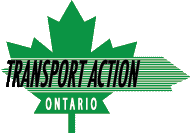By
Transport Action Ontario
|
Intercity Rail and Bus ,
Latest News ,
Northern Ontario ,
Press Releases and Open Letters
Our affiliate, the Coalition for Algoma Passenger Trains (CAPT) issued the following media release regarding exciting news about the Bear Train.
On Friday, October 4, 2019, Chief Jason Gauthier, Chief of Missanabie Cree First Nation sent to Deputy Minister Michael Keenan a newly completed business plan for the proposed Mask-wa Oo-ta-ban (Cree for Bear Train) passenger service between Sault Ste. Marie and Hearst. This third iteration of the business plan is more thorough, detailed and complete than the previous ones presented to Transport Canada. All of the many stakeholder groups from the Algoma rail corridor as well as several rail experts were consulted and contributed to the final version of the plan.
This detailed business plan will illustrate to Transport Canada
that Missanabie Cree First Nation (MCFN) has now completed the requirements to
ensure the operation of this essential service. The other
requirements that they had previously successfully accomplished are:
i. Receipt
of a Railway Operating Certificate
ii. Completion
of a safety plan
The plan indicates how operational funding for the Bear Train from
Transport Canada, that decreases over a period of five years, will be an
excellent investment in at least three ways. It is a very low-cost way for the Federal Government to achieve a triple
win by contributing to its objectives:
i. Contribute to
Reconciliation with Indigenous people
ii. Mitigate Climate Change
iii. Support
Economic Development & increase employment
Contribute to
Reconciliation with Indigenous people
The Bear Train initiative is an opportunity for the
Federal government to help correct the unjust acquisition of land and
building of the ACR by ensuring that the passenger train service becomes
essential transportation infrastructure for regional economic development of
the First Nations through whose traditional territories it passes. It puts the
MCFN in the leadership, managerial role for an important regional service that
was previously an instrument of their colonization–an essential service
for the local Indigenous, Anglophone and Francophone communities.
Mitigate Climate Change
For Canada to meet the GHG reductions set out by
the Paris Accord, Canadians are encouraged to opt for less polluting forms of
transportation. Since there are no roads into this rail corridor float
plane travel is the only alternative to passenger rail since the Algoma
passenger train service ended in 2015. Much of the environmental tourism market
has been lost for the tourism resorts some of which can now only be accessed by
float planes—a very polluting form of transportation.
Support Economic Development and increase employment, particularly for Indigenous Canadians
The Algoma Central Railway (ACR) corridor passes
through the traditional territories of at least three First Nations between
Sault Ste. Marie and Hearst, including Constance Lake First Nation and
Michipicoten First Nation. These traditional territories have been
used for many generations by First Nations for hunting, fishing, trapping and
other socio-cultural activities. More recently these have become areas in
which First Nations are developing eco and Indigenous tourism businesses, as
well as forest management plans and other resource-based undertakings.
The Mask-wa Oo-ta-ban initiative is an opportunity for the Federal government to help to ensure that the passenger service plays its important role as essential transportation infrastructure for the regional economic development of the First Nations through whose territories its passes as well as for the local Anglophone and Francophone communities. .
Mask-wa Oo-ta-ban (the Bear Train) is an economic development initiative of the Missanabie Cree First Nation to re-establish the essential passenger service from Sault Ste. Marie to Hearst to support the economic, employment, social and remote access needs of the First Nations, communities, residents, businesses and socio-economic stakeholders of the Algoma passenger train corridor. The Algoma region is a distressed area for employment and economic opportunity. The $40-$50 million in economic benefits (BDO, 2014) and the 100s of jobs the passenger train supported directly and indirectly are vital to the Algoma region’s economic sustainability—particularly in the tourism sector. This employment is particularly needed by the Indigenous people of our region whose rates of unemployment are significantly higher than the rest of the population.
One of the principal forms of economic development
that this train supports is tourism—particularly the growing niche markets of
Indigenous tourism, eco-green tourism, accessible tourism and Francophone
tourism. As Minister of Tourism, Official Languages and La Francophonie Melanie
Joly recently stated, “Tourism is an inclusive sector that showcases Canada’s
culture, diversity, natural beauty and unique experiences to the world. It
delivers economic benefits across the country by supporting one in ten
jobs.”
Over $50 million in annual
economic benefits that came from the Algoma passenger train has been lost since
the service stopped in 2015. We urge Transport Canada to end this loss by
funding the Bear Train for the next five years according to the Bear Train
Business Plan plan.








You must be logged in to post a comment.